Sign up on TourScanner
Day Trips and Tours from Seville
Day Trips and Tours from Seville
Originally founded as the ancient Roman city of Hispalis, Seville is bursting with a history that extends over 2,200 years.
Alongside its many landmarks and attractions, Seville is an ideal jumping-off point to explore many other Spanish destinations in the region.
Whether you want to hike through the picturesque gorges surrounding Carminito del Rey or buff up on your archaeological knowledge wandering the ruins of Itálica, there are day trips and tours from Seville to suit every interest.
Ronda
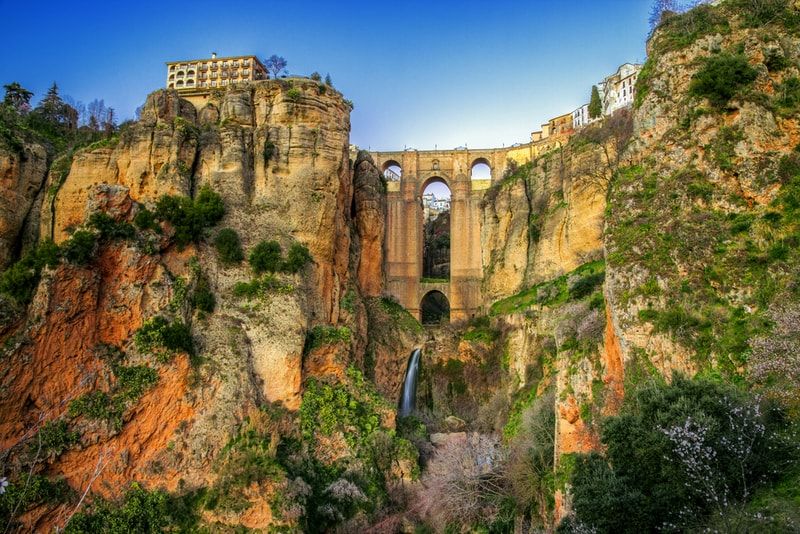
The city of Ronda was founded in the 6th century B.C. and is located in the Málaga region of southwestern Spain. While the city may be small, it is one of the most visited destinations in the country and is famed for its iconic bridge.
Day trips to Ronda explore this 18th-century masterpiece and educate you on the Celtic history of the Spanish town, including the changes it has undergone over the past 2,700 years.
These excursions typically include the White Villages of Andalucia — including Setenil — which have featured red-tiled roofs and white-washed buildings since ancient Roman times.
Itálica
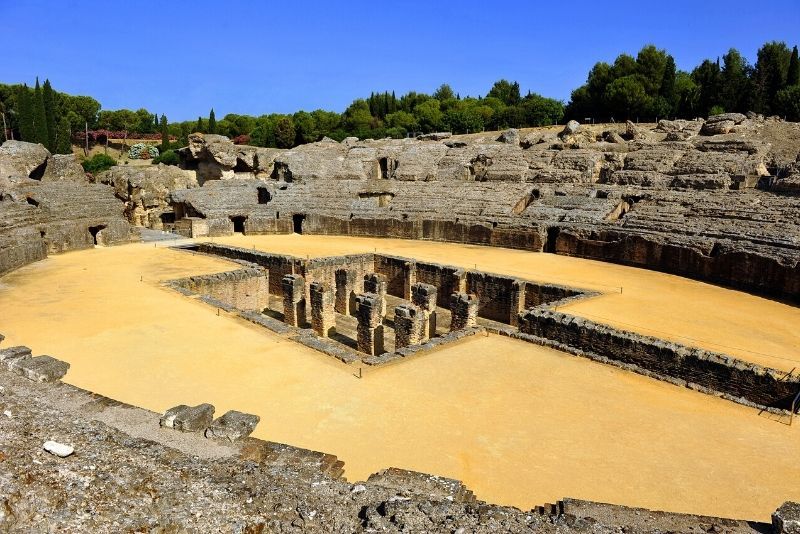
Those who want to step back in time to the Roman rule can do so by embarking on a day tour of Itálica. This ancient Roman city can be found close to the modern town of Santiponce and was gradually abandoned over the 2nd, and 3rd centuries.
Thought to be the first township built in Iberica, the site has been expertly preserved and is the ideal place for history buffs to visit.
A day trip to this archaeological treasure guides you around its once-opulent dwellings, as well as its sizeable theater and unspoiled mosaics.
Cordoba

Cordoba is a UNESCO-listed city that lies in the Andalucian peninsula of Spain. Cordoba’s claim to fame is as the home of the greatest number of UNESCO sites in the world.
These historic spots include the Mosque-Cathedral of Cordoba, the Historic Center of Cordoba and the Medina Azahara, all of which can be explored on a day trip to Cordoba.
The mosque-cathedral is the most significant Muslim building in the western world and was converted into a catholic cathedral in the 13th century.
Most excursions also travel to Carmona in order to discover the town’s Moorish fortress and grand palace.
Granada

Granada has roots as a Muslim city for over 800 years and was overtaken by Catholics in the 15th century.
Nestled in the foothills of the Sierra Nevada mountains, this historic city still shows signs of its Islamic rule via its castle and fortress, both of which you can admire on an excursion to Granada.
This complex is referred to as Alhamabra and was built over the course of the 13th century by Nasrid emir, Muhammed I Ibn al-Ahmar. Other sights you can see on a day tour of Granada include its cathedral and royal chapel.
Doñana National Park

The natural reserve of Doñana National Park spans over 500 square kilometers in the Huelva province of Andalucia.
Its marshlands and woodlands make the park one of the most biodiverse destinations in the country, and the site is home to over 270 species of birds.
Alongside its feathery friends, you can also see many land animals, including wild boar, red deer and lynx on a day trip to Doñana National Park.
Another must-see sight in this region is the village of El Rocio, which borders the nature reserve and is a pilgrimage site for devout Catholics.
Its white-washed hermitage and traditional way of life make El Rocio the perfect destination to explore after admiring the natural beauty of Doñana National Park, and is often visited alongside the reserve.
Cadiz
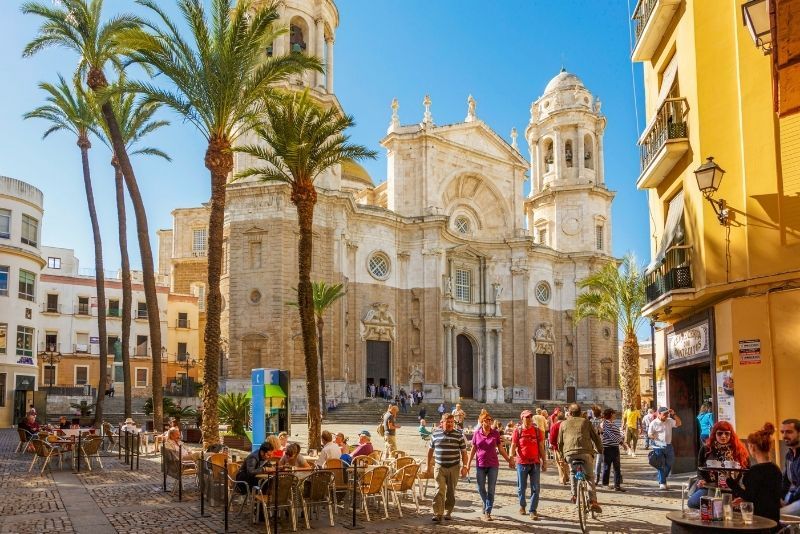
A port city that lies on the North Atlantic Ocean, Cadiz is considered the oldest destination in Europe and was founded by the Phoenicians in the 12th century B.C.
As such, you’ll find plenty of historic landmarks scattered throughout the streets of Cadiz, including its 18th-century cathedral and city wall, which separates the Old Town from the modern city.
The area is known for its sherry production and most day tours to Cadiz also include the nearby town of Jerez for a wine-tasting extravaganza.
Gibraltar
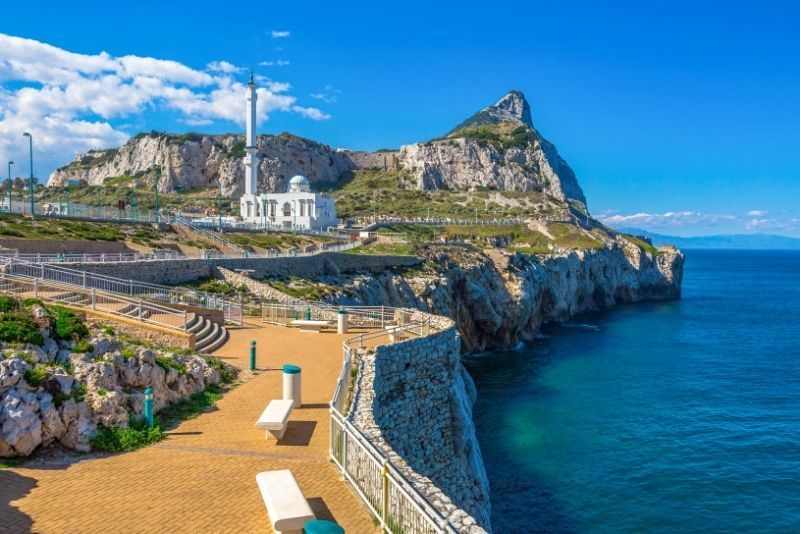
On the tip of the Iberian peninsula lies the British Overseas Territory of Gibraltar. The city was captured by Anglo-Dutch forces in the 18th century and has remained a British domain ever since.
The destination is best known for the Rock of Gibraltar, from which you can gain panoramic views that stretch as far as Africa.
This rock is considered one of the two Pillars of Hercules, the other of which is Mount Hacho in Morocco. Greek mythology defines these two natural monuments as the “limit of the known world.”
An excursion to Gibraltar enables you to discover this fascinating history for yourself, as well as get up close with the barbary macaques that roam the peak.
Tangier
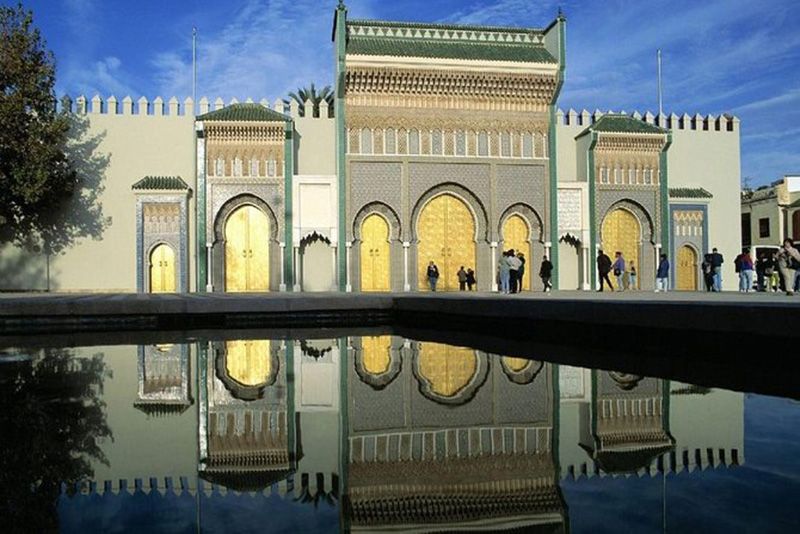
If you want to leave the continent of Europe behind altogether, you can hop across the thin stretch of sea to Morocco on a day trip to Tangier.
Discover the vibrancy of the white-washed city, including its famous medina, in which you’ll find the 18th-century Kasbah Palace, once the home of the sultan.
On a guided excursion, you’ll participate in a walking tour of Tangier, exploring the city’s many alleyways and attractions. You can also expect to pay a visit to the Cave of Hercules — a cave complex that features markings from the Phoenicians.
The legend surrounding the cave is that Hercules — the son of Zeus — rested here before his 11th labor.
Caminito del Rey
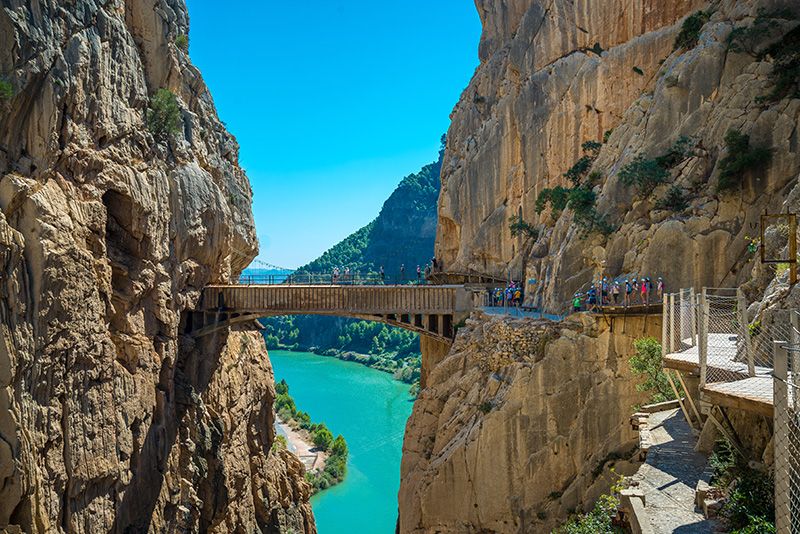
Those seeking a tranquil escape from Seville’s bustling streets should consider opting for a day tour to Caminito del Rey.
This walkway is located in the Gorge of the Gaitanes, next to the village of El Chorro in Málaga, and attracts many rock climbers, and thrill seekers each year.
Carminito del Rey hangs 100 meters over the Guadalhorce River and its name translates to the “King’s Pathway.” Day trips typically include an invigorating hike to reach this walkway, along the jagged rock formations that carve out the gorge.
Tiptoe along the Carminito del Rey — named the world’s most dangerous walkway — if you dare for panoramic views of the river.
Aracena
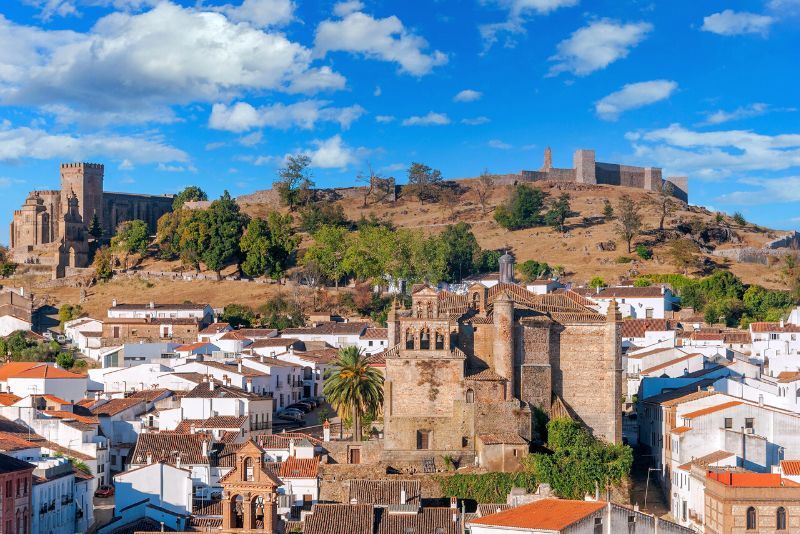
Founded in the 13th century, Aracena is located in the Sierra de Aracena Natural Park. This township is surrounded by verdant hills, full of enchanting cork trees and grazing Iberian pigs.
The town’s main attraction is its castle, built over 200 years and finished in the 15th century on the site of another ancient Moorish castle.
Most Aracena day trips pay a visit to the Rio Tinto Mines, which are rich in copper, silver and gold. You’ll also have the opportunity to journey through ancient caves, surrounded by stalagmites and stalactites on this type of excursion.
Bull Breeding Farm
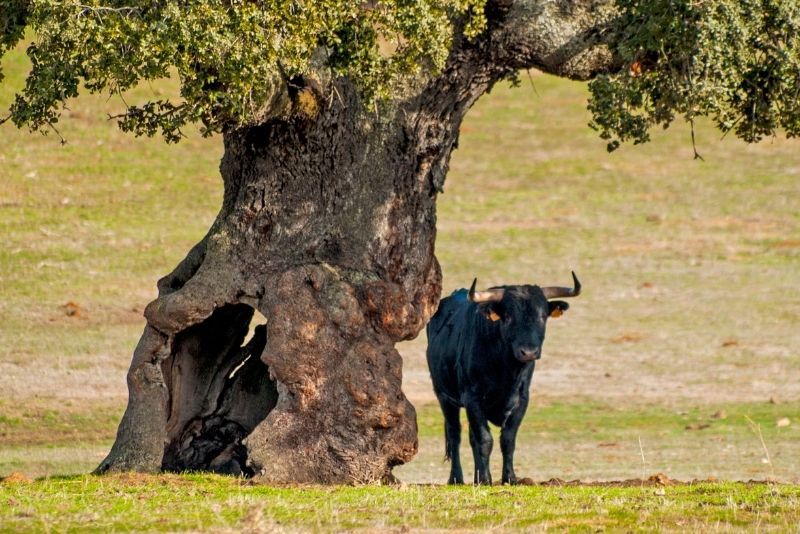
Bullfighting is one of the most iconic Spanish traditions, which can be traced back to the 8th century when the sport began to honor King Alfonso VIII’s coronation.
Since then, bullfighting has become engrained in Spanish culture, entertaining both locals and visitors.
Expert matadors gauge the bull’s behavior and enter the ring alongside the aggravated creature in a suspenseful fight to the death, a tradition that also still stands in other parts of the world including Mexico, and Colombia.
An excursion to a bull breeding farm provides you with an insight into bullfighting and enables you to see how toro bravos are raised in the idyllic countryside surrounding Seville.
Necropolis

Carmona’s Necropolis dates back to the 1st century and was rediscovered by accident in the 19th century after being buried for thousands of years.
The site is home to the ruins of a Roman funerary ground, where notable figures were incinerated upon their death.
On a day trip to the Necropolis, you can tour the archaeological ruins and visit the first amphitheater built in Spain or discover the cult of Cybele at the Elephant Tomb.
This site shows an important part of ancient Roman history and how it connects to modern life.
Osuna
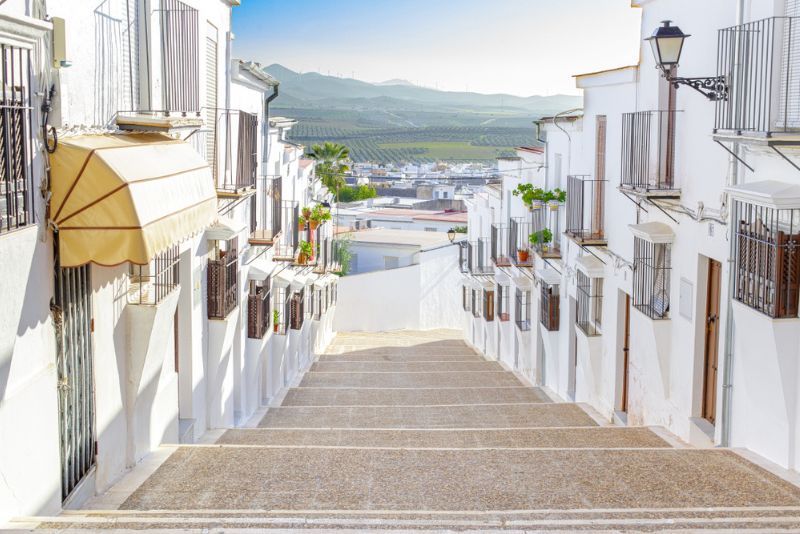
The charming hilltop town of Osuna is located within the Seville province of southern Spain and its origins stretch back over 3,000 years.
The town has had several names over the centuries, including Urso and Oxana, and is home to several historic sites including its catholic church and 17th-century monastery.
The town’s popularity has grown since several of the fantasy TV series “Game of Thrones” scenes were shot here, which you’ll tour on an Osuna excursion.
